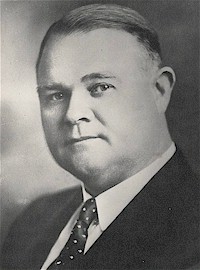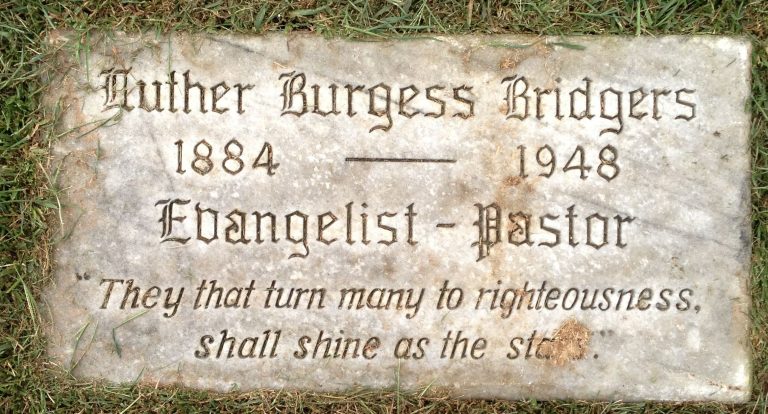Hymn History: He Keeps Me Singing & Author: Luther Burgess Bridgers Sr.
“In spite of ‘life’s ebb and flow,’ he felt his heart filled with a melody whispered by Jesus: ‘Fear not, I am with thee, peace, be still.’ … He knew that even though we may feel overwhelmed by the hardships in life, this truth keeps us singing God’s praises.”
(Anonymous)
The Origin of the Hymn “He Keeps Me Singing”
Few gospel songs have captured the joy of abiding fellowship with Christ as warmly and cheerfully as “He Keeps Me Singing.” Written in 1910 by Luther Burgess Bridgers, the hymn is both a testimony of triumph through sorrow and a declaration of the sustaining power of Jesus Christ. Beneath its lilting melody and optimistic tone lies a story marked by deep tragedy, personal faith, and the unshakable conviction that the Lord gives a song even in life’s darkest night.
The Writer: Luther Burgess Bridgers
Luther B. Bridgers (1884–1948) was born in Margaretsville, North Carolina, into a devout Methodist family. From an early age, he displayed both musical and spiritual gifts. He was converted as a boy and soon felt called to the ministry, following in the footsteps of his father, who was also a Methodist preacher.
Bridgers attended Asbury College in Wilmore, Kentucky—an institution known for its emphasis on holiness and evangelistic zeal. After graduation, he entered full-time evangelistic work, preaching and singing across the American South. His preaching was characterized by warmth, sincerity, and a joyful assurance in the Christian life.
In 1905, he married Sarah Veatch, and together they had three sons. Bridgers’ ministry flourished as he conducted revival meetings and saw many conversions. By all appearances, he was a man richly blessed with both family and calling.
The Tragedy
In 1910, while Luther was conducting a two-week revival meeting in Kentucky, his wife and sons were visiting her parents in Harrodsburg, also in Kentucky. One night, while the family slept, a terrible fire broke out in the house. Before anyone could rescue them, Sarah and the three little boys perished in the flames.
When Luther received the news, his world collapsed. The man who had preached about joy and hope in Christ suddenly faced an unbearable loss. His grief was profound, yet those who knew him said that his faith did not fail. Instead, in the midst of this devastating sorrow, he turned to the God he had long served and found comfort in the promises of Scripture—particularly in the assurance that Christ Himself is ever near to comfort and sustain His children.
It was during this period of anguish and recovery that Bridgers wrote “He Keeps Me Singing.” Though some accounts suggest that he may have written parts of it earlier, the hymn became, in every sense, his personal testimony of faith after tragedy.
The Hymn
The opening stanza expresses the calm and confidence of a believer who knows the presence of Christ even in hardship:
There’s within my heart a melody,
Jesus whispers sweet and low,
“Fear not, I am with thee, peace, be still,”
In all of life’s ebb and flow.
The refrain captures the radiant joy that permeates the entire song:
Jesus, Jesus, Jesus—sweetest name I know,
Fills my every longing,
Keeps me singing as I go.
The second and third verses acknowledge both the sunshine and shadows of life—“All my life was wrecked by sin and strife” and “Though sometimes He leads through waters deep.” Yet each returns to the refrain of unshakable joy in Jesus’ presence. The later stanzas point toward heaven, where “soon He’s coming back to welcome me.”
In a few short verses, Bridgers managed to express the full journey of the Christian soul—from inner peace through trial to final glory. The words reflect the reality of suffering but also the deeper reality of Christ’s sustaining grace.
The Music and Publication
Bridgers wrote both the words and music for “He Keeps Me Singing.” The tune is simple, bright, and easily singable—qualities that helped the song spread quickly through revival meetings and church gatherings. Its joyful melody made it a natural fit for evangelistic settings, while its message of comfort made it beloved among ordinary believers.
The hymn was first published in 1910 in a small collection edited by Charles H. Gabriel, one of the most prominent gospel songwriters of the era. Gabriel, recognizing the song’s beauty and strength, included it in several hymnals that circulated widely across the United States.
By the 1920s, “He Keeps Me Singing” was a standard in many denominational hymnbooks, and it became a favorite closing song in revival meetings. Over time, it was recorded by numerous gospel quartets, choirs, and soloists.
The Enduring Message
The enduring appeal of “He Keeps Me Singing” lies in its remarkable balance of realism and hope. It does not deny the pain of life, but it affirms that the Christian’s source of joy is not dependent on circumstances. Jesus Himself is the melody that fills the believer’s heart.
For Luther Bridgers, this was not mere sentiment—it was the expression of hard-won faith. Having walked through grief few can imagine, he could still sing, “Jesus keeps me singing as I go.” His life after the tragedy was devoted to continued ministry; he went on to serve as a pastor, evangelist, and missionary speaker, bearing witness to the sustaining grace of Christ.
Legacy
Today, more than a century after its composition, “He Keeps Me Singing” remains one of the most loved gospel hymns of the twentieth century. It continues to be sung in churches, nursing homes, and revival meetings, bringing joy and peace to those who know what it means to suffer yet still trust in Christ.
In the end, Luther Bridgers’ life embodied the truth he wrote: though the storms of life may come, there remains within the believer’s heart a song that cannot be silenced. And the name of that song is—Jesus.
Related
Sorry, no records were found. Please adjust your search criteria and try again.
Sorry, unable to load the Maps API.

